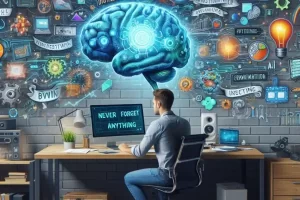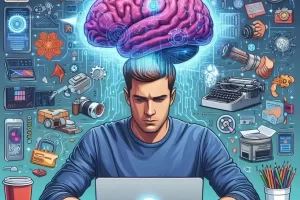In today’s fast-paced, information-saturated world, trying to retain everything we read, learn, or think is simply not realistic. But what if you had a reliable system — powered by artificial intelligence — to remember everything for you? Welcome to the concept of the second digital brain. It’s not science fiction; it’s a productivity revolution, and you can start building yours today with tools that already exist.
What Is a Second Digital Brain?
The idea of a “second brain” originated from the productivity expert Tiago Forte, who developed a method for capturing and organizing information outside of your mind so you can use your actual brain for thinking, not for storing. A second digital brain is essentially a system — often powered by note-taking apps and now enhanced with artificial intelligence — where all your ideas, insights, notes, tasks, and learnings live.
Imagine a place where:
- Every book note you’ve taken is instantly searchable.
- Every task or reminder is auto-organized.
- Every idea you’ve ever had is saved and connected to related thoughts.
That’s your second digital brain.
Why You Need a Second Digital Brain with AI
We’re exposed to more information than ever before — emails, meetings, articles, podcasts, courses. Keeping up without a structured system can lead to burnout, forgotten ideas, and missed opportunities. AI enhances this structure by adding intelligence and automation to your system.
Benefits include:
- Instant retrieval of information via natural language search.
- Automated categorization of notes and ideas.
- Smart reminders and content summarization.
- Seamless integration with tools you already use (Google Docs, Notion, Evernote, etc.).
Tools You’ll Need to Get Started
You don’t need to be a tech expert or invest in expensive software. Here’s a simple toolset to build your second brain:
- Notion or Obsidian (for note storage and idea organization)
- ChatGPT or Claude AI (for natural language queries and summarization)
- Readwise (to save and sync highlights from articles, Kindle books, and podcasts)
- Google Drive or Dropbox (for file storage and backup)
- Zapier or Make.com (for automation and integration between tools)
These tools work together to turn random bits of information into a coherent system of thought.
Step-by-Step: How to Build Your Second Digital Brain
Let’s break the process down into actionable steps.
Capture Everything
The foundation of any second brain is capturing information the moment you come across it. Use tools like:
- Notion web clipper for articles
- Readwise for book and podcast highlights
- Voice notes if you’re on the go
Don’t worry about organizing everything perfectly upfront. The goal is to avoid losing ideas.
Organize with Smart Categories
Once captured, use AI to sort and tag your notes automatically. For example:
- Set up Notion AI to suggest categories for each new entry.
- Use ChatGPT plugins to summarize and classify notes weekly.
Create high-level areas like: - Work Projects
- Learning & Research
- Life Planning
- Inspiration & Ideas
Use AI for Review and Connection
A second brain isn’t just about saving — it’s about retrieving and connecting. Use AI to:
- Summarize long articles or PDFs into key insights
- Suggest related notes or tasks
- Highlight recurring themes in your notes
This transforms your second brain into a thinking partner, not just a digital storage space.
Automate the System
Set up simple automations like:
- “If I highlight a quote on Kindle, send it to Notion.”
- “If I upload a PDF to Google Drive, summarize it using ChatGPT.”
- “Every Monday, review my top 10 most-viewed notes.”
Use Zapier, IFTTT, or Make.com to automate these connections without code.
Revisit and Evolve
Every week or month, spend time reviewing:
- What you’ve captured
- What you’ve learned
- What you want to act on
You can even use AI to generate a weekly summary or journal entry based on your activity. This reflection helps you internalize knowledge and improve your system.
Use Cases for Your AI-Powered Second Brain
This system isn’t limited to productivity geeks — it has real-world use across industries:
- Students can organize notes, prepare summaries, and plan study sessions.
- Writers can store ideas, research, and drafts in one place.
- Entrepreneurs can track goals, feedback, and strategies.
- Creatives can save visual inspiration and link it to projects.
- Professionals can manage meetings, documents, and task lists.
In every case, AI turns your second brain from a filing cabinet into a thinking assistant.
Common Mistakes to Avoid
While setting up your second digital brain, avoid these traps:
- Overcomplicating the structure — keep it simple and useful.
- Saving everything without reviewing — your brain needs curation.
- Ignoring automation — AI can save you hours per week.
- Forgetting to back up — use cloud storage for safety.
Keep your system clean, flexible, and focused on utility, not perfection.
Future of Thinking: You + AI
The concept of external memory isn’t new — philosophers like Socrates warned about writing things down. But in the age of AI, we’re not just writing things down — we’re interacting with them in new, intelligent ways. Your second brain isn’t just a backup, it’s a living, evolving assistant.
When built correctly, your second digital brain will:
- Think with you
- Learn from you
- Remind you of what matters
You’ll never say “I forgot” again — because your second brain will remember it all for you.




